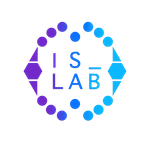K. Kravari, N. Bassiliades, “StoRM: A Social Agent-based Trust Model for the Internet of Things Adopting Microservice Architecture”, Simulation Modelling Practice and Theory, Vol. 94, pp. 286–302, 2019.
Author(s): K. Kravari, N. Bassiliades
Appeared In: Simulation Modelling Practice and Theory, Vol. 94, pp. 286–302, 2019
Keywords: Multi-agent systems, Internet of things, Agent-based model, Trustworthiness, Social criteria, Microservice architecture
Tags:
Abstract: Over the last years, the Internet of Things attracted much attention mainly due to its potential to change our daily life. It attempts to create a world where everyone and everything will be connected while knowledge will be diffused effortlessly. Yet, this open, distributed and heterogeneous environment raises important challenges, such as intelligence and trustworthiness. Intelligent Agents can deal with these challenges since they form an alternative to traditional interactions among people and objects while, at the same time, they are involved in a rich research effort regarding trust management. Additionally, intelligent agents seem able to deal with potential societal impacts and relationships, although they are not primary social networks, as well as the heterogeneity in the Internet of Things when combined with novel approaches such as the microservice architecture. To this end, this article proposes a novel, reputation oriented, trust model, called StoRM, for the Internet of Things that combines social dimensions and microservice architecture with agent technology. StoRM is based on well-established estimation parameters while it provides a reputation estimation mechanism based on social principles. Additionally, it proposes the use of microservices combined with learning and adoption properties facilitating the implementation of the agent-based system and the trust establishment among its members. Furthermore, it adopts a distributed locating mechanism based on social graphs and peer-to-peer networks. StoRM combining a set of features is able to address many of the challenges of trust management in the Internet of Things while it is one of the first approaches that involve the microservice architecture in a trust management model. Finally, a multi-agent simulation is presented that illustrates the viability of the proposed approach.
